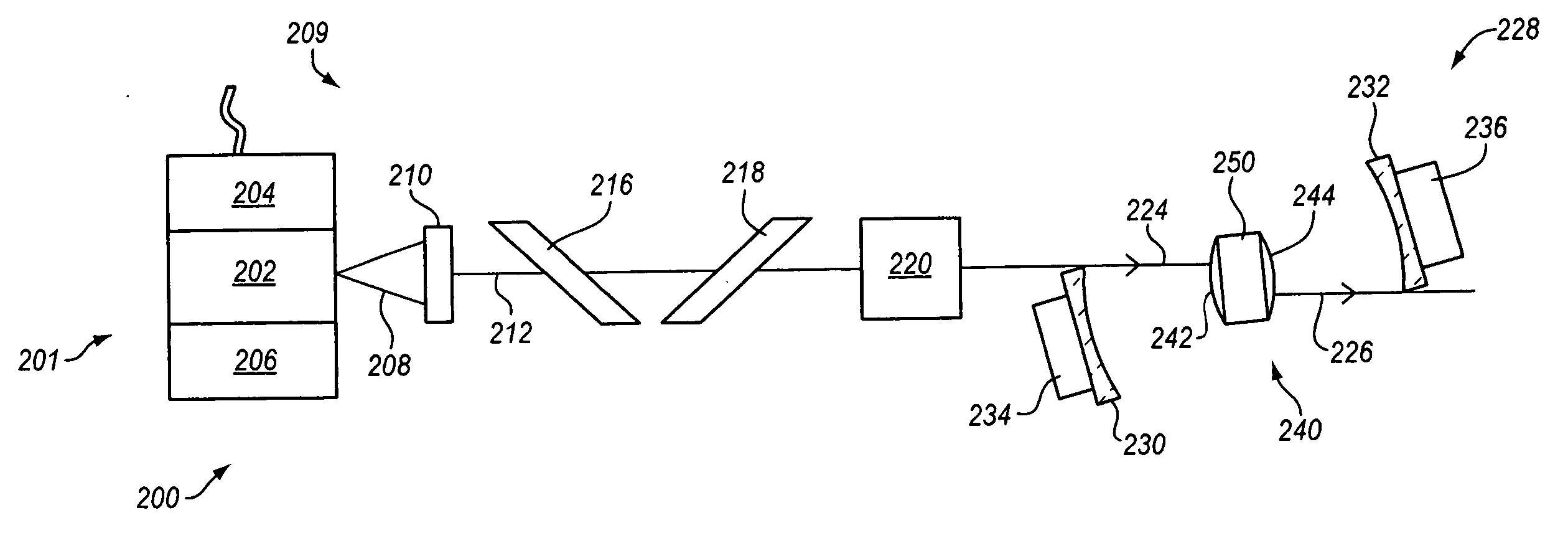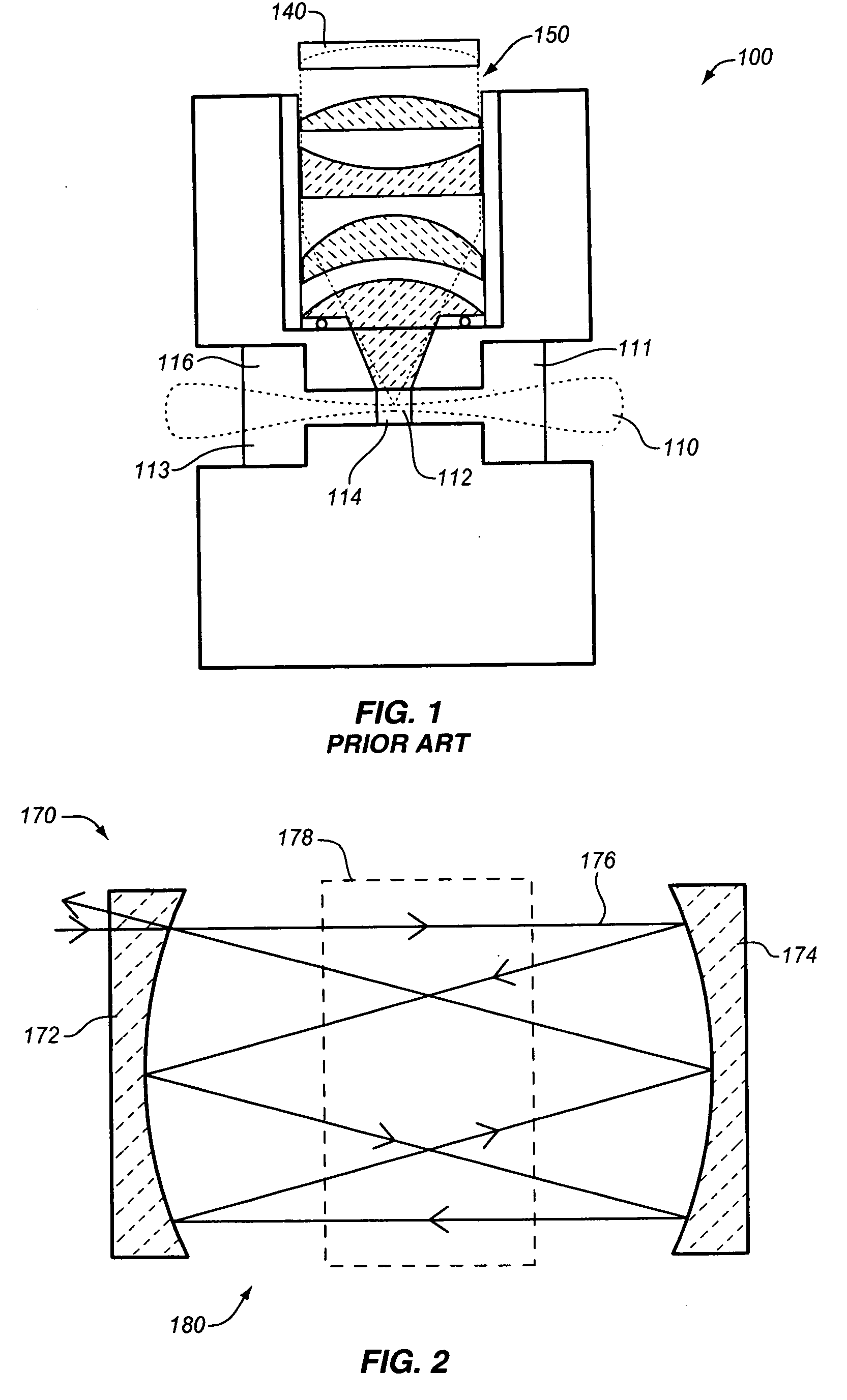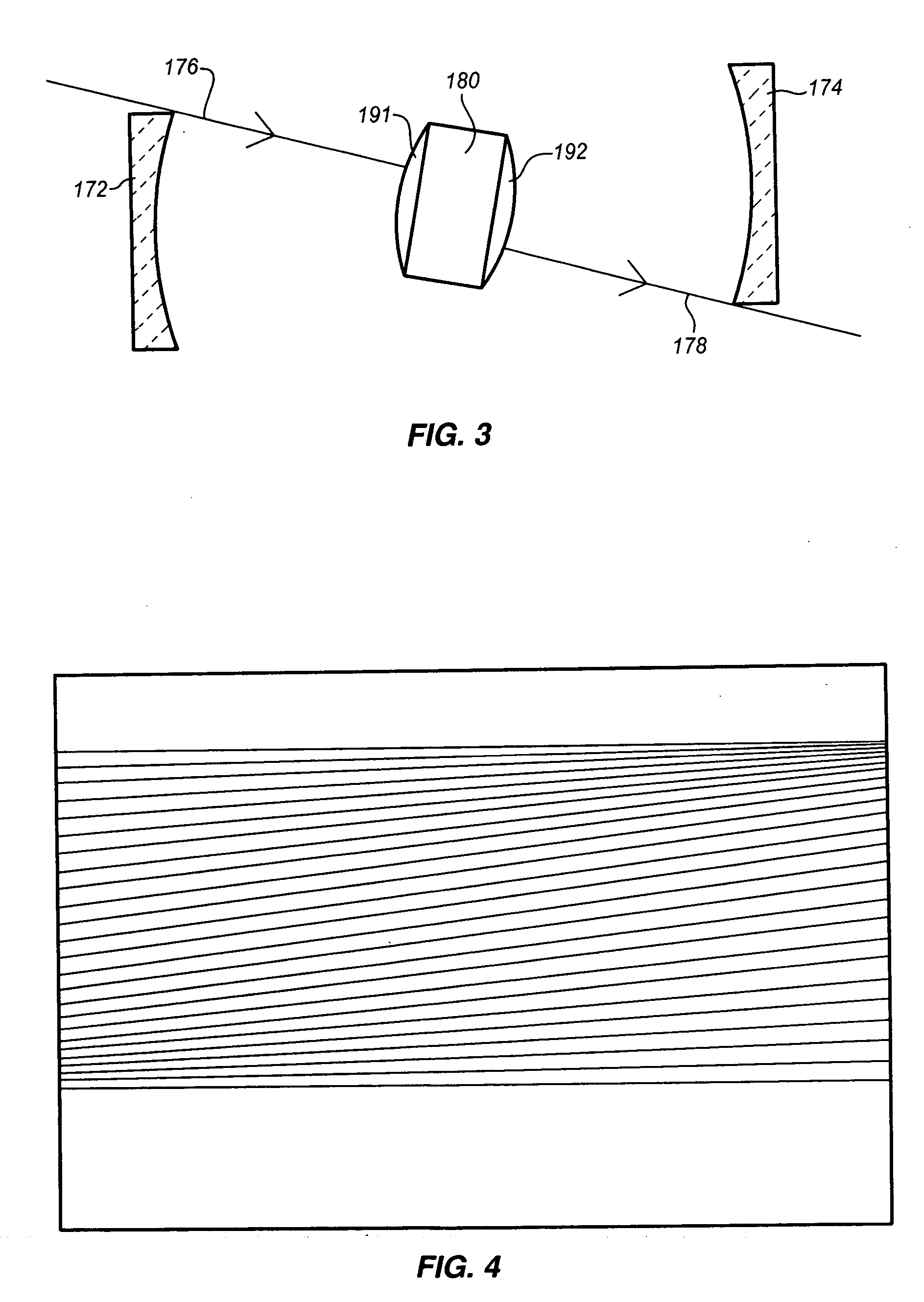Particle counter with improved image sensor array
- Summary
- Abstract
- Description
- Claims
- Application Information
AI Technical Summary
Benefits of technology
Problems solved by technology
Method used
Image
Examples
Embodiment Construction
[0034] In this disclosure, the term “light” is not limited to visible radiation but is used in a broad sense meaning any electromagnetic radiation, including infrared, ultraviolet, extreme ultraviolet, and x-ray radiation. The term “stray light” includes any light that is not wanted, i.e., light that is not light scattered from particles but which can get into the collection optics. Multiple reflected light is a significant source of stray light in prior art particle counters. That is, light that is reflected once, scattered from a scattering source, or diffracted by a lens or aperture can usually be blocked out by other apertures or absorbing black walls even in conventional particle counters because the source of the unwanted light is known. However, multiple reflections make it difficult to determine the direction of the light, and thus often cannot be apertured or otherwise blocked out. As will be discussed below, the invention provides a unique system and method so that stray l...
PUM
 Login to View More
Login to View More Abstract
Description
Claims
Application Information
 Login to View More
Login to View More - R&D
- Intellectual Property
- Life Sciences
- Materials
- Tech Scout
- Unparalleled Data Quality
- Higher Quality Content
- 60% Fewer Hallucinations
Browse by: Latest US Patents, China's latest patents, Technical Efficacy Thesaurus, Application Domain, Technology Topic, Popular Technical Reports.
© 2025 PatSnap. All rights reserved.Legal|Privacy policy|Modern Slavery Act Transparency Statement|Sitemap|About US| Contact US: help@patsnap.com



